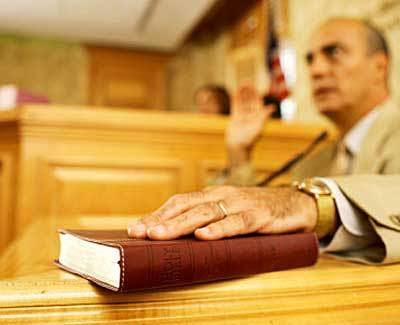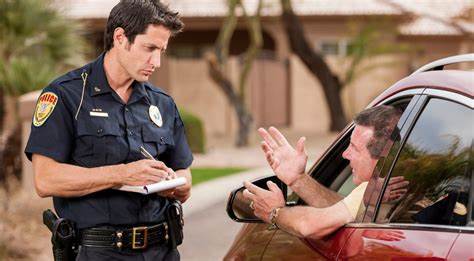In the realm of law enforcement, traffic stops are a common occurrence, raising questions about officers’ authority and procedures. Understanding the nuances of when and how police can pull over motorists, along with exceptions to the general rule, is crucial for both drivers and officers alike.
General Rule: Can Cop Pull You Over From The Opposite Roadside?
In most jurisdictions, a police officer can legally pull you over from the opposite road under certain circumstances. The general rule is that officers can initiate a traffic stop as long as they have reasonable suspicion or probable cause to believe that a traffic violation or other offense has occurred. However, there are several factors and considerations involved in this scenario that need to be discussed in detail.
Firstly, the legality of a traffic stop from the opposite road depends on the specific laws and regulations of the jurisdiction in question. Different states or countries may have different rules regarding traffic stops, so it’s important to understand the laws applicable to the area where the incident occurs.
One key consideration is visibility and safety. If a police officer can clearly observe a traffic violation or suspicious behavior from the opposite road and it’s safe to do so, they may decide to initiate a traffic stop. This could include observing a vehicle speeding, running a red light, or swerving erratically.
Another factor is the officer’s ability to safely and effectively pull over the vehicle. If the officer determines that it’s feasible to make a U-turn or otherwise safely navigate to the same side of the road as the vehicle in question, they may proceed with the traffic stop.
Additionally, technology can play a role in enabling officers to conduct traffic stops from the opposite road. For example, some police vehicles are equipped with dash cameras or other recording devices that can capture evidence of traffic violations from a distance. In such cases, an officer may review the footage later and choose to pursue a traffic stop based on the evidence gathered.
It’s also important to consider the discretion of the officer involved. Even if they observe a potential traffic violation from the opposite road, they may choose not to initiate a traffic stop for various reasons. This could include prioritizing more serious offenses, assessing the risk of pursuing the vehicle, or exercising leniency based on the circumstances.
Overall, while a police officer generally has the authority to pull over a vehicle from the opposite road, the decision to do so depends on various factors such as the legality of the stop, visibility and safety considerations, technological capabilities, and the officer’s discretion. As with any law enforcement action, the key is for officers to exercise their authority responsibly and in accordance with the law.
Exceptions: Can Cop Pull You Over From The Opposite Roadside?
Yes, a police officer can pull you over from the opposite road under certain circumstances, but there are exceptions to this general rule. Let’s delve into these exceptions in detail:
1. Traffic Safety and Visibility Concerns:
One significant exception to the general rule occurs when traffic safety and visibility concerns outweigh the necessity of initiating a traffic stop from the opposite road. Law enforcement officers are trained to prioritize public safety, and there are situations where attempting to pull over a vehicle from the opposite road could pose a risk to both the officer and other road users.
For example, if the road is narrow or winding, or if there are obstacles obstructing visibility, attempting to execute a traffic stop from the opposite side could create a hazardous situation. Similarly, adverse weather conditions such as heavy rain, fog, or snow may impair visibility and make it unsafe for an officer to pull over a vehicle from the opposite direction.
In such cases, the officer may choose to exercise discretion and refrain from initiating the traffic stop until it is safe to do so. This could involve following the vehicle until it reaches a suitable location for the stop or waiting for backup to arrive to assist with the stop.
2. Jurisdictional Constraints:
Another exception to the general rule arises when jurisdictional constraints prevent an officer from legally executing a traffic stop from the opposite road. In some jurisdictions, laws or regulations may explicitly prohibit officers from crossing certain boundaries or jurisdictions to conduct traffic stops.
For instance, if a police officer from one city or county observes a traffic violation in another jurisdiction, they may not have the authority to pursue the vehicle and initiate a traffic stop from the opposite road. Attempting to do so could result in legal complications and jurisdictional disputes.
Additionally, there may be practical limitations on an officer’s ability to enforce traffic laws across jurisdictional lines, such as differences in procedural requirements or limitations on mutual aid agreements between law enforcement agencies.
In such cases, the officer may be required to notify the appropriate authorities in the jurisdiction where the violation occurred and request assistance in conducting the traffic stop. Alternatively, they may choose to provide a description of the vehicle and its occupants to the local authorities for further investigation.
3. Emergency Situations:
One exception occurs in emergency situations where the immediate apprehension of a suspect or the prevention of a crime takes precedence over procedural considerations. If a police officer witnesses a serious offense, such as a violent crime or a felony in progress, from the opposite road, they may choose to disregard the usual protocol and initiate a traffic stop to intervene.
In such cases, the urgency of the situation may justify the officer’s decision to pull over the vehicle from the opposite road, even if it involves some risk or violates standard procedures. The primary concern is to ensure public safety and prevent further harm or escalation of the situation.
For example, if an officer observes a suspect fleeing the scene of a robbery in a vehicle, they may decide to pursue and pull over the vehicle from the opposite road to apprehend the suspect and prevent them from escaping or committing additional crimes.
However, it’s important to note that officers are expected to exercise discretion and judgment in determining when to deviate from standard procedures in emergency situations. They must weigh the risks and potential consequences of their actions while prioritizing the safety of themselves, other road users, and the public at large.
4. Vehicle Equipment Limitations:
Another exception relates to limitations imposed by the equipment or capabilities of the police vehicle. While modern law enforcement vehicles are equipped with advanced technology and communication systems, there are still situations where the vehicle’s capabilities may restrict an officer’s ability to pull over a vehicle from the opposite road.
For instance, if a police vehicle is not equipped with adequate lighting or sirens, attempting to execute a traffic stop from the opposite road could pose a safety risk by potentially confusing other drivers or failing to alert the vehicle being pulled over. Similarly, if the police vehicle lacks sufficient speed or maneuverability to safely navigate across lanes of traffic, attempting to pull over a vehicle from the opposite road may not be feasible.
In such cases, the officer may be compelled to prioritize the safety of themselves and other road users by refraining from initiating the traffic stop until they can do so safely. This could involve waiting for backup or assistance from a more appropriately equipped vehicle, or following the vehicle until it reaches a location where the stop can be conducted safely.
Frequently Asked Questions
1. Can a police officer pull me over for any reason?
Yes, a police officer can initiate a traffic stop if they have reasonable suspicion or probable cause to believe that a traffic violation or other offense has occurred. Common reasons for traffic stops include speeding, running red lights or stop signs, reckless driving, and equipment violations such as broken taillights.
2. What should I do if a police officer signals for me to pull over?
When signaled by a police officer to pull over, it’s important to do so in a safe and timely manner. Activate your turn signal, slow down, and pull over to the right side of the road as soon as it’s safe to do so. Remain in your vehicle with your hands visible on the steering wheel until instructed otherwise by the officer.
3. Do I have to answer questions from the police during a traffic stop?
While you have the right to remain silent, it’s generally advisable to cooperate with the officer during a traffic stop. You are required to provide your driver’s license, vehicle registration, and proof of insurance if requested. Avoid arguing with the officer or making statements that could be construed as admissions of guilt.
4. Can a police officer search my vehicle during a traffic stop?
In most cases, a police officer cannot search your vehicle without your consent or probable cause to believe that evidence of a crime is present. However, if the officer has reasonable suspicion and believes that your vehicle contains contraband or evidence of a crime, they may conduct a limited search of the vehicle’s interior.
5. What should I do if I believe my rights were violated during a traffic stop?
If you believe your rights were violated during a traffic stop, you should remain calm and compliant during the encounter. Take note of the officer’s badge number, patrol car number, and any other identifying information. After the stop, you can file a complaint with the police department’s internal affairs division or seek legal counsel to explore your options further.
Last updated on: April 29, 2024




